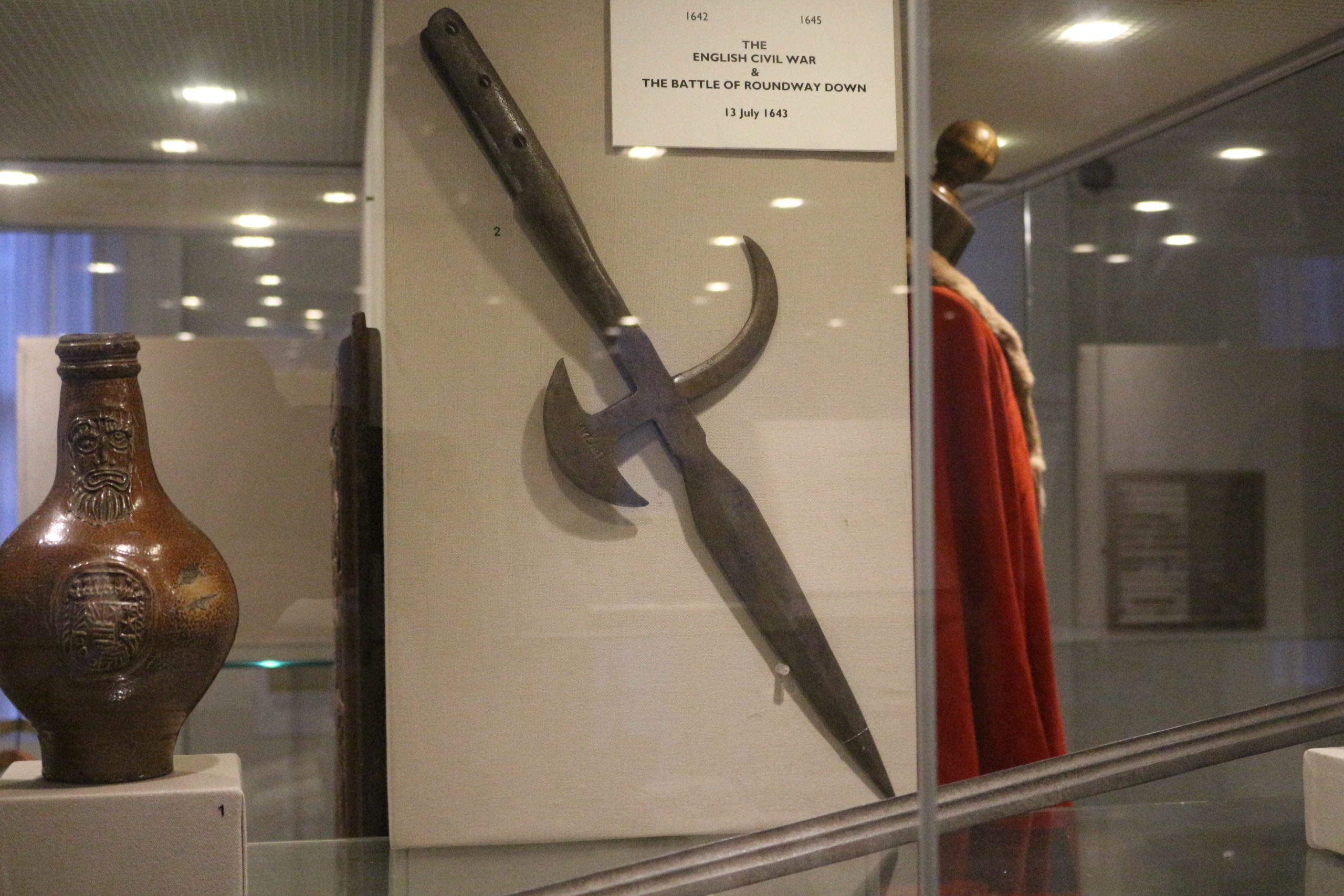This iron halberd head was found at foot of Morgan’s Hill, Roundway, Wiltshire, which is the site of the battle of Roundway Down, 1643, stamped Hyland, date unknown. Length 5730 mm; width 1870 mm.
Halberd also spelt Halbert or Halbard, weapon consisting of an axe blade balanced by a pick with an elongated pike head at the end of the staff. It was usually about 1.5 to 1.8 meters (5 to 6 feet) long. The halberd was an important weapon in middle Europe from the 14th through the 16th century.
In some of the burghs* of Scotland, the halberd is retained as the symbol of authority borne before the magistrates on public occasions. The halberd weapon’s origins can be traced to the Swiss armies of the 14th and 15th centuries. Early halberd weapons were normally six feet (182.88cm) in height and given the fact that they could be produced inexpensively, halberd was extensively used by all Swiss fighters, including peasants. Later, European armies started making use of halberd between 16th and 18th centuries. However, since the arrival of musket and gunpowder hand-weapons, its significance diminished from 16th century onwards.
The Halberd weapon allowed the wielder to attack the enemy in many ways, given the versatility of the weapon. The pike** at the other end of the halberd was used to confront the horseback enemy troops while it was also used to keep the enemy at a safe distance. The axe mounted on one side of the halberd shaft could be wielded with great power. Finally, the hook behind the axe was also used to pull the horsemen causing them to tumble from their horses. During the training of halberd use, the specific focus was the use of the weapon against mounted riders. Soldiers were trained to wield the halberd effectively and speedily in various ways to inflict damage on enemy soldiers and horses quickly. The success of the use of a halberd in the hand of a soldier depended on three things: agility, accuracy and strength.
One of the key disadvantages of the halberd was the fact that it was a pole arm and was effective only at a certain length. In closer combats, halberds were simply ineffective and had to be shed by the wielder who then had to resort to an alternate side-weapon. In the case of the Swiss soldiers, this side arm was a small dagger while German soldiers chose to use a small sword. Another disadvantage of using a halberd was that the wielder could not use a shield at the same time, which was a problem if the combat turned to close quarters during the battle.
Halberds had several advantages. Firstly, the length of the shaft allowed the axe mounted on it to be wielded with such strength that its blade could pierce metal, even the armour of the knights in many cases. The hook behind the axe was particularly effective when facing a charge of horseback attackers. In such a charge, the pike could be used to pierce and wound the enemy riders and the hook was effective in pulling them down from their horses. A good wielder who was an expert in using halberd was a particularly deadly foe.
Joe Moore
*A borough or chartered town.
** An infantry weapon with a pointed steel or iron head on a long wooden shaft.


